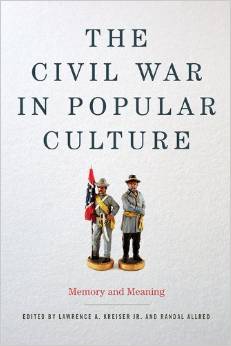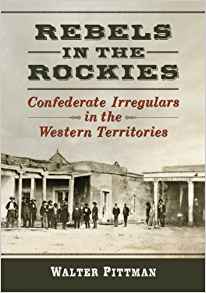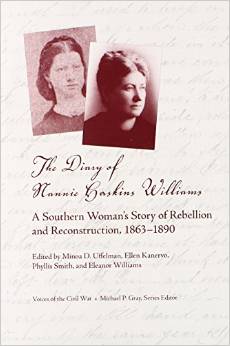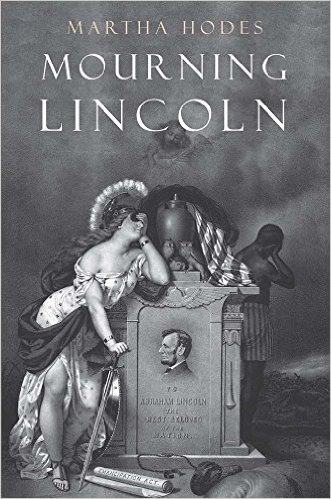The Civil War in Popular Culture: Memory and Meaning edited by Lawrence A. Kreiser, Jr., and Randal Allred. University Press of Kentucky, 2013. Cloth, ISBN: 978-0813143071. $40.00.
 In the fall of 2014, Gone with the Wind will once again grace the big screen in select theaters. Seventy-five years after David O. Selznick’s lavish screen version of Margaret Mitchell’s novel overwhelmingly debuted, it has continued to resonate with – and some might argue inform – popular understandings of the Civil War today. As Tony Horwitz relates in Confederates in the Attic, in the 1990s tourists flocked to Georgia seeking the “real” Tara while at least one young woman found work portraying Scarlett to adoring crowds.
In the fall of 2014, Gone with the Wind will once again grace the big screen in select theaters. Seventy-five years after David O. Selznick’s lavish screen version of Margaret Mitchell’s novel overwhelmingly debuted, it has continued to resonate with – and some might argue inform – popular understandings of the Civil War today. As Tony Horwitz relates in Confederates in the Attic, in the 1990s tourists flocked to Georgia seeking the “real” Tara while at least one young woman found work portraying Scarlett to adoring crowds.
Such public interpretations of the Civil War are at the heart of a new collection of essays edited by Lawrence A. Kreiser, Jr., and Randal Allred. This incredibly diverse volume is composed of essays from academic historians, literary scholars, and public historians. Arranged thematically, the first section focuses on the veterans and opens with an essay by Michael Schaefer exploring how Civil War veterans grappled with the guilt of killing, often long-after Appomattox. Beginning with portrayals by Hollywood of butchering surgeons, in the next essay, Brian Craig Miller asks provocative questions about how Confederate amputees reconciled their lost limbs with southern masculinity.
The collection’s second section turns to the fields of battle. Daryl Black examines souvenirs produced to commemorate the planning and dedication of Chickamauga-Chattanooga. Invoking David Blight’s thesis, he argues that an 1889 program for a Blue-Gray picnic along with a ribbon and Confederate songbook produced for the 1895 dedication all “advanced a version of the Civil War that focused on the valor of white men in combat and simultaneously marginalized the wartime roles of African Americans” (48). None of the objects, he notes, featured African Americans either as slaves or as Union soldiers. Robert E. Weir shifts our attention north to Gettysburg, finding a similar pattern of historical memory. He contends that in the decades after the war, “sectional wounds were so raw that” northerners “downplayed ideological differences in favor of somber memorials to the dead.” Slavery and emancipation were quite consciously left out of the park’s interpretation in the name of reconciliation, and over the years a “greying” effect occurred whereby increasing numbers of Confederate monuments dotted the field. Only in the late-1990s did the park make an effort to include the story of African Americans, slavery, and race. Susan Chase Hall offers an engaging third essay about the relationship between preservationists and modern culture. Despite a long history of tension between the two, she shows, by the late-1990s, the Civil War Preservation Trust had found a way to harness popular culture in the interest of preservation.
The third section examines historical memory over time. Here, Jacqueline Glass Campbell offers a splendid essay on how southern white women rewrote the story of Sherman’s March to the Sea, casting themselves as defenseless victims. Matthew Eng seeks to retrieve lost or buried memories of the war’s navies. With the exception of the battle of Hampton Roads, he notes, little attention is given to the naval component of the war. In the fourth section, essayists pick up with two areas that have produced several other collections and monographs on Civil War in popular culture: the war in fiction and film. Examining one of Abraham Lincoln’s trials, Daniel W. Stowell analyzes the roles of the historian versus the novelist and/or screenwriter. In an essay that would surely provide a great discussion in the classroom, he asks whether fictionalized accounts enhance or distort our understanding of the past. Paul Haspel explores depictions of battle in Glory. The essays in final section take up the ways in which twentieth and twenty-first century Americans have sought to “experience” the war. Alfred Wallace offers a fascinating piece on the evolution of Civil War-themed board games produced between 1961 and 2010. The final piece, by Christopher Bates, examines race and the Lost Cause among modern day reenactors. Why, he asks, do most reenactors choose to don the Confederate gray? Most outsiders would point to the simple conclusion of racism, but Bates argues that this is an oversimplification. Instead, he maintains, Confederate reenactors are perceived as racists because of negative popular images of the South.
Although I applaud the diversity of topics that are included in this collection, the subjects of the essays do not always seem to fit the editors’ definition of popular culture of a “widely consumed public event that influences the perception of the Civil War” (3). While discussions of what visitors to Gettysburg National Military Park learned and Civil War board games surely reflect popular interpretations of the war, it is less clear how studies of veterans’ postwar psyches fit the parameters of the collection. Likewise, I was disappointed to find that a book on popular culture did not include any illustrations. Images of the reunion program and ribbons or from the board games, for example, would have been particularly helpful in conveying the authors’ points.
Perhaps my biggest concern is a single line in the volume’s introduction. “The peril is,” write the editors in lamenting the dearth of works on the Civil War and popular culture, “scholars will cede the shaping of popular attitudes toward the past to, among others, politicians, novelists, film directors, and increasingly, bloggers” (3). But isn’t this precisely what the study of Civil War memory examines? Is it not the novels, speeches by veterans and politicians, and even films such as Birth of a Nation and Gone with the Wind that have led us to question why and how individuals and societies have come to define the past? Moreover, is history alone the province only of scholars? Are we the sole arbiters of what is and what is not history? Does this not cut against the very grain of “public memory”?
Despite these critiques, many of these essays offer wonderful gems. I plan to use it in my upcoming Civil War memory class, as it offers an array of insights into how the war continues to pervade contemporary American culture, both shaping our understanding of this pivotal moment in history and informing how we perceive ourselves in relation to the past.
Caroline E. Janney is Professor of History at Purdue University, the President of the Society of Civil War Historians, and the author of Remembering the Civil War: Reunion and the Limits of Reconciliation (2013), which won the Jefferson Davis Book Award from the Museum of the Confederacy.




